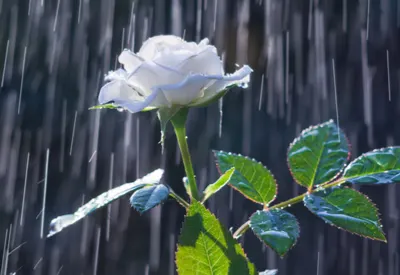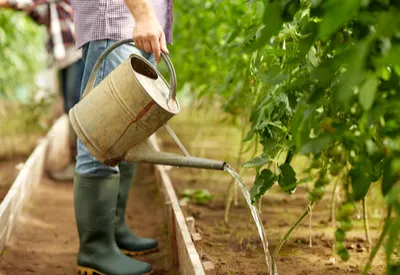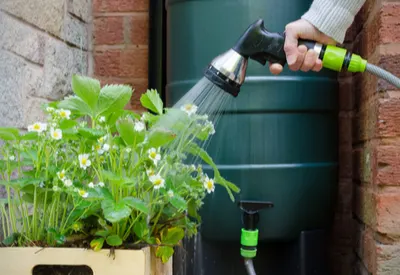One of the biggest secrets to gardening success is watering vegetable plants and flowers correctly.
Pests, disease and weeds can certainly spell trouble for a gardener, But it is usually the lack of too much or too little water that creates the most trouble for plants.
Although water needs will vary from climate to climate, good watering habits can really be narrowed down to 4 basic tasks. Watering at the right time. Getting the water to the right area of the plant. Watering the right amount, and watering on the right schedule. Get those 4 things right, and all is good!
4 Secrets To Watering Vegetable Plants And Flowers Correctly
Water At The Right Time

Nothing can beat pure rain when it comes to watering vegetable plants and flowe.rs
When you water really can make all the difference!
Avoid watering plants during the hottest point of the day. When the sun is burning down, plants are stressed beyond belief.
Because of the high stress level, plants are unable to take in as much H2O as they can under less stressful conditions. In addition, water is quickly evaporated from the sun – reducing the amount of water that can ever make it to the plant’s roots.
Last but not least, watering during the heat of the day can damage the foliage of plants. As the tiny droplets of water sit on the leaves during and after watering, the hot summer sun can actually burn and scorch plants.
So when is the best time to water? Early morning is your number one choice. Temperatures are cooler, and plants are more relaxed and able to easily take in nutrients. It also provides the water needed for plants to take on the heat of the day.
Early evening is your second best choice for many of the same reasons. One word of caution for watering in the evening – if you live in cooler climates, it can lead to mold and mildew problems for plants that cannot dry out fast enough.
Where You Water Matters

Water around the roots, not the foliage of plants.
Avoid watering plants with just a blast of water to their foliage. Concentrate efforts on the soil and root zone around the plants instead.
Watering with a full stream of water directly on plants can injure leaves and stems. It can also easily knock off tender blooms that create all of those vegetable and beautiful flowers. Watering low and under foliage also helps cut down on losses from evaporation.
Slow and gentle watering of the root zone is the way to water. Use a steady gentle stream to water around the plants. Keep from spraying the leaves directly if at all possible. Drip hoses and weeping hoses are two choices that can work wonders for watering only the root zones of plants. But simply using a hose and watering around the plants will work just fine. Product links : Drip Hose – Slow Soaker Hose
Giving Plants The Right Among Of Water
So how much water should you give your plants? This will vary from climate to climate, but here are some good guidelines.
When it comes to watering vegetable plants and flowers, on average, most plants need about 1 to 1 ½ inches of water per week.
In an average climate, if you receive two rains per week for a few hours each, that is usually adequate. If not, that equates to about 1/4 to 1/2 gallon per plant a few times a week.

Rain barrels like this one are a great way to capture rains for future plant use.
If you are experiencing extremely hot weather, or live in a hot, dry climate, then additional watering sessions will probably be needed..
Be careful of watering too often on hot, humid days. Soil will retain most of its moisture because of the high humidity. Extra watering simply isn’t needed. To test, push your finger into the soil a few inches from the plant. If the dirt is sticking to your finger because it’s moist, the plants are fine.
Low-humidity and windy days are much more apt to dry out soil than hot humid days.
How Often To Water
The only time daily watering is needed is when plants are initially transplanted. For the first five to seven days, water plants daily to keep transplant shock to a minimum. After a week, you can back off on watering every day or two to just a few times a week.
Remember plants that get too much water on a regular basis keep their roots at the surface. This results in a weak plant that dries out quickly. Plants that establish deeper roots are much less prone to drought.
Share Your Garden Tips or Garden!
Be sure to check out all of our vegetable garden articles on our Vegetable Tips Page. Want to showcase your backyard garden or gardening tip on This Is My Garden? Email us today at info@thisismygarden.com, and you might be our next feature! This article may contain affiliate links.
